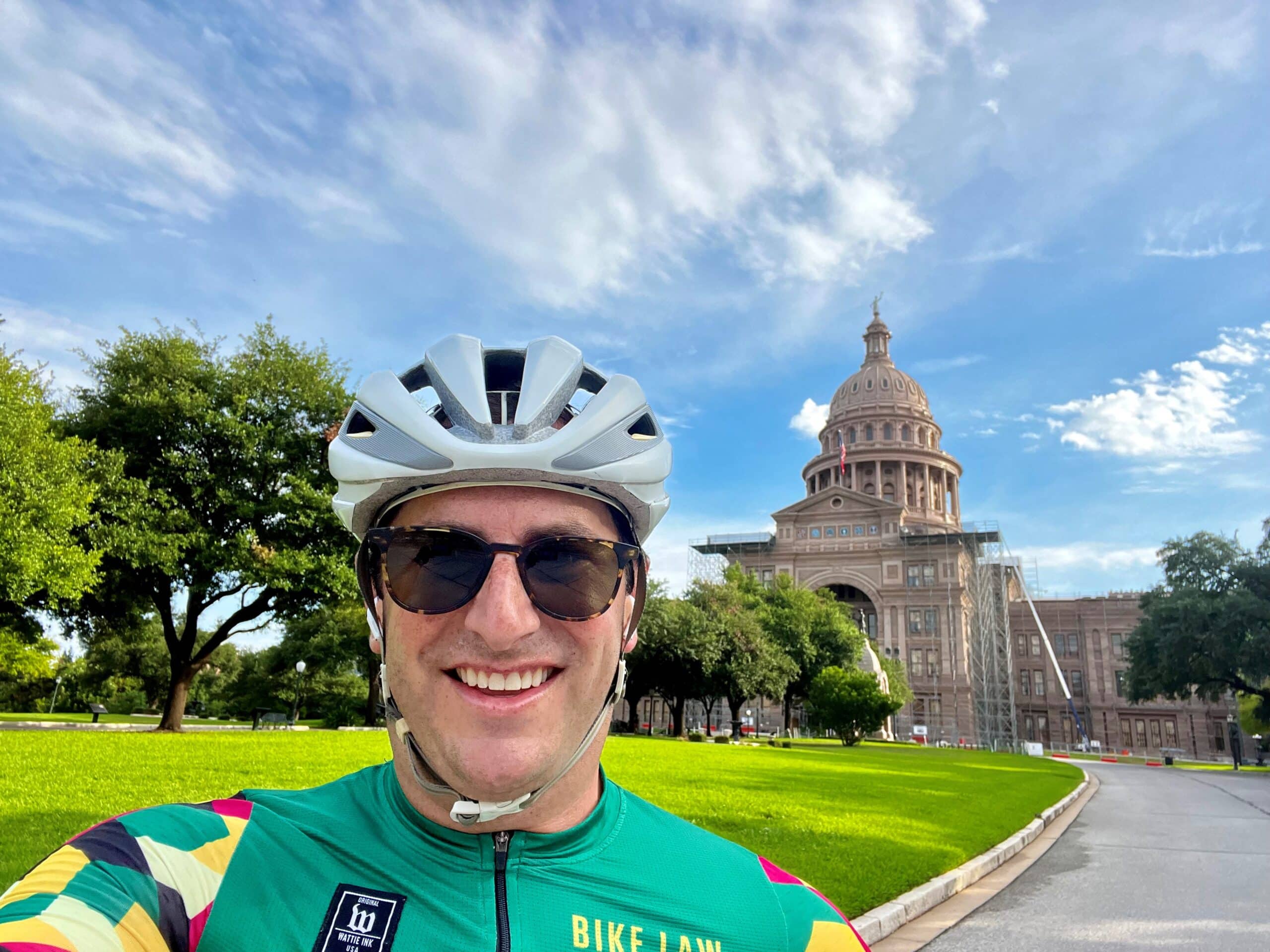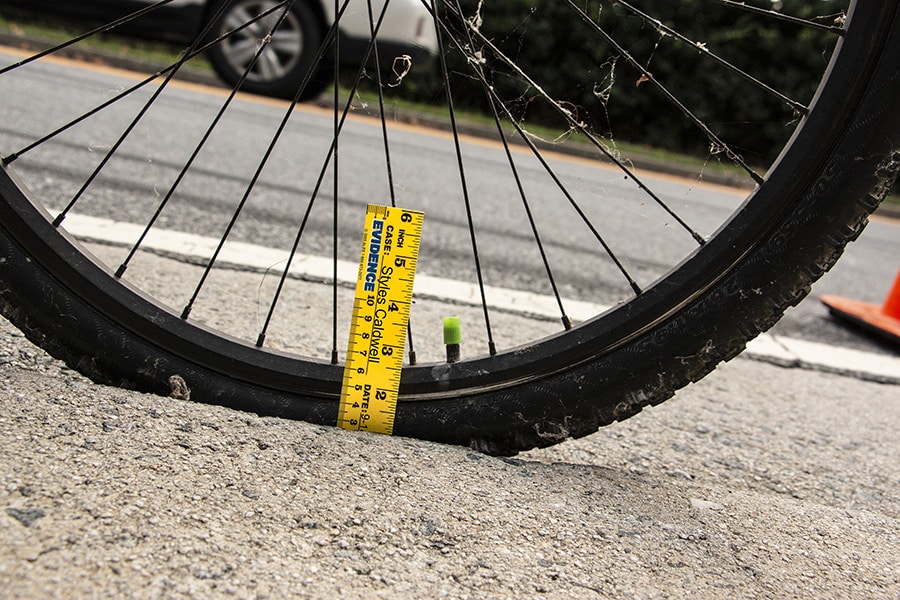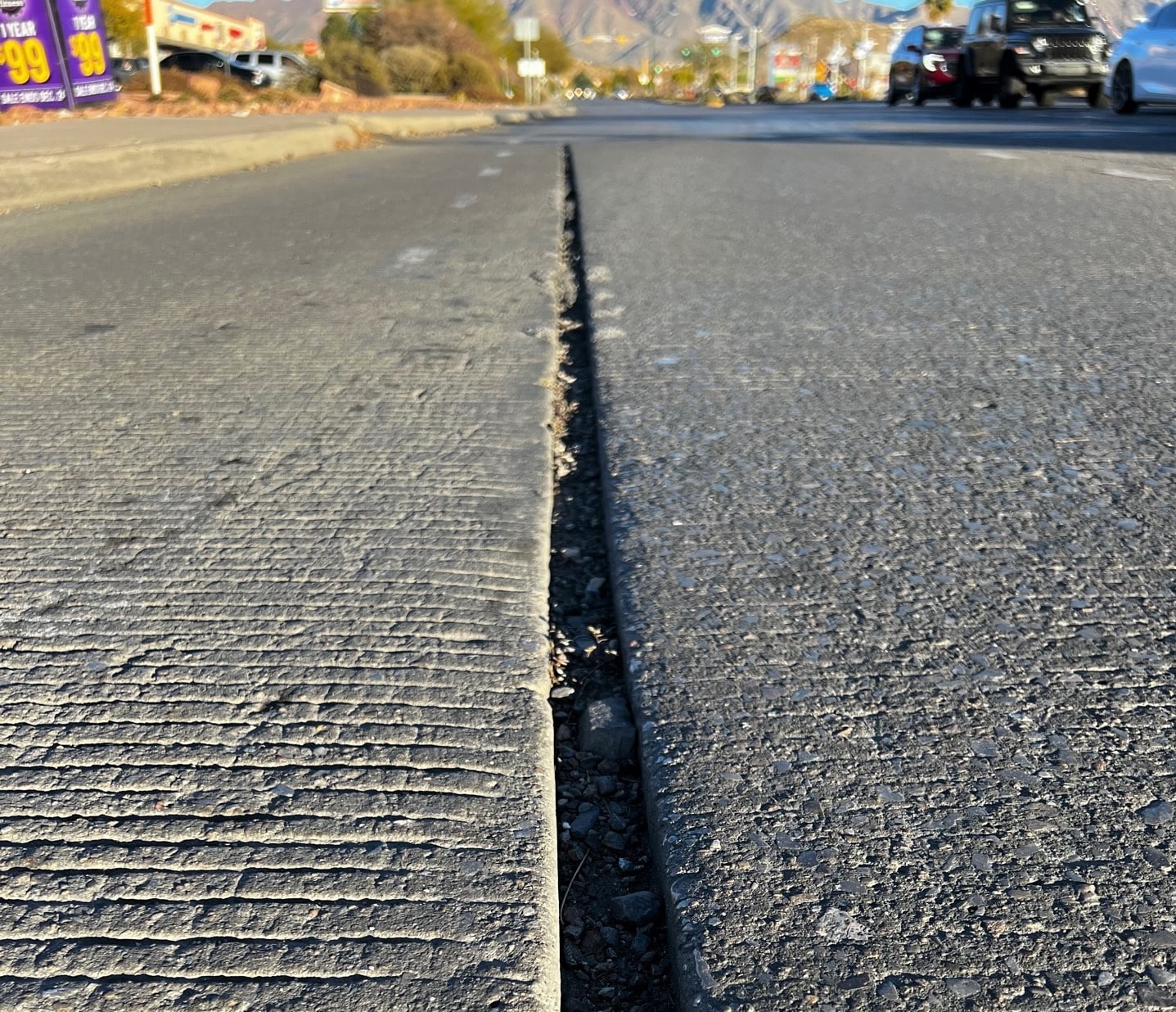The Oregon Legislature made national news this past week, for all the wrong reasons. The State Senate, with a super-majority of Democrats in control, had been working on climate legislation which would have Oregon join a cap-and-trade market with California and Quebec. Unable to stop the legislation, Republican Senators fled the state en masse, preventing the quorum necessary for passing legislation. Governor Kate Brown ordered State Police to find the missing Senators, which prompted one of the Senators to make veiled threats of violence against the police. Militia groups offered to defend the absentee Senators against the State Police, and the capital was subsequently shut down on the advice of the State Police. With just days to go before the end of the legislative session, the cap-and-trade bill was effectively dead.
Lost in all of that high-stakes drama was a major legislative victory for cyclists: the Oregon Legislature passed an Idaho-style Stop-as-Yield Law.
Ten years ago, a Stop-As-Yield bill failed in The Oregon Legislature, and with it, hopes that Oregon would become the second state to adopt a Stop-as-Yield law. In the intervening years, similar legislative efforts in other states met a similar fate. But over time, something changed—the concept of Stop-as-Yield began to seem less preposterous, more reasonable. Did the arguments finally begin to make sense? Did people just need time to get used to the idea? Arthur Schopenhauer noted that “All truth passes through three stages. First, it is ridiculed. Second, it is violently opposed. Third, it is accepted as being self-evident.”
Whatever it was that had changed, by 2017, the logjam had begun to break, and Delaware became the second state to pass a Stop-as-Yield law (albeit a limited version of the Idaho law). The following year, Colorado passed legislation that standardized Stop as Yield language, and giving cities and counties the option to adopt a local Stop as Yield law with that language. Neither the Delaware nor the Colorado legislation were complete Stop as Yield laws in the vein of the Idaho law, but they were clear evidence that opposition to the Stop as Yield concept was buckling.
Then, on April 1 of this year, Arkansas passed a full Idaho-style Stop as Yield law, officially becoming the second state in the country to adopt the Idaho law in its entirety. By April 10, the Oregon Senate was considering its own version of a Stop-as-Yield Law. The tide was clearly turning. But would it turn in Oregon too?
There wasn’t much time left before the end of the 2019 legislative session, but on June 19th, the bill passed in the Senate by 21-8—next stop, the House. With only 5 days left before this legislative year ended, the Oregon House passed the Senate bill by 31-28. It was a squeaker of a vote, but it passed. If the Governor signs the legislation, as seems likely, Oregon will become the 4th state to pass a Stop-as-Yield law.
The Idaho Stop—What Is It?
“Stop as Yield” has been the law in Idaho since 1982, and “Red as Stop” was added to the Idaho law in 2006. Here’s how it works in Idaho: When a cyclist approaches a stop sign in Idaho, the law says that the cyclist may treat the stop sign as if it is a yield sign. This means that the cyclist is required to slow to a reasonable speed when approaching the intersection, and “stop if necessary for safety.” The law continues: “After slowing to a reasonable speed or stopping, the person shall yield the right-of-way to any vehicle in the intersection or approaching on another highway so closely as to constitute an immediate hazard…” However, if the cyclist has the right of way at the intersection, the cyclist may slow to a reasonable speed and roll through without stopping or yielding. This is exactly how a yield sign works, which is why the law is usually called “Stop as Yield.”
The Idaho law also has a “Red as Stop” clause, which means that cyclists are required to stop at a red light, but after yielding to all other traffic, may proceed through the intersection without having to wait for the light to turn green. This is exactly how a stop sign works, which is why the law is called “Red as Stop.”
But is it Safe?
According to the Idaho Transportation Department, there has been “no discernible increase in injuries or fatalities to bicyclists.” In fact, the first year after the Stop as Yield law passed, injuries to bicyclists actually decreased by 14.5%. In other words, decades of real-world experience on Idaho’s roads demonstrate conclusively that Stop as Yield is safe.
And yet despite decades of data showing that stop as yield is safe, opposition to the law has always centered on the perception that it is unsafe, with worst-case fantasy scenarios—ill-mannered cyclists arrogantly blowing through stop signs and leaving chaos in their wake—serving as arguments against the law.
The reality is quite different; virtually all cyclists are safety-conscious, because they have the most to lose in any collision. When a cyclist treats a stop sign as a yield sign, it may ruffle some feathers, but the cyclist is highly conscious about safety when rolling through the stop. And the data from Idaho shows this.
The Idaho Stop Comes to Oregon
The next stop for Oregon’s Stop as Yield law will be the Governor’s desk. If she signs the bill, as seems likely, Stop as Yield will be the law in Oregon (more on that in a future article). However, this isn’t a full-blown Idaho-style Stop as Yield law.
So how will the law work in Oregon? Listen up, Oregon cyclists, because how you approach and enter an intersection will make the difference between a legal “Stop as Yield” and an illegal “Improper entry into an intersection.”
Under the new Stop as Yield law, if a cyclist who is approaching an intersection where traffic is controlled by a stop sign slows to a safe speed, the cyclist may do any of the following without violating the law:
- proceed through the intersection without stopping;
- make a right or left turn into a two-way street;
- make a right or a left turn into a one-way street in the direction of traffic upon the one-way street.
Conversely, the cyclist will be violating the law if the cyclist:
- Fails to yield the right of way to traffic lawfully within the intersection or approaching so close as to constitute an immediate hazard;
- Disobeys the directions of a police officer or flagger;
- Fails to exercise care to avoid an accident; or
- Fails to yield the right of way to a pedestrian in an intersection or crosswalk.
What about red lights? Unlike Idaho, Oregon’s law does not have a “Stop as Red” provision. However, the law does allow a flashing red light to be treated as a yield sign. Under the new law, if a cyclist who is approaching an intersection where traffic is controlled by a flashing red light slows to a safe speed, the cyclist may do any of the following without violating the law:
- proceed through the intersection without stopping;
- make a right or left turn into a two-way street;
- make a right or a left turn into a one-way street in the direction of traffic upon the one-way street.
Conversely, the cyclist will be violating the law if the cyclist:
- Fails to yield the right of way to traffic lawfully within the intersection or approaching so close as to constitute an immediate hazard;
- Disobeys the directions of a police officer;
- Fails to exercise care to avoid an accident; or
- Fails to yield the right of way to a pedestrian in an intersection or crosswalk.
Violations of the Stop as Yield Law will be a Class D traffic violation, currently subject to a minimum fine of $65, a maximum fine of $250, and a presumptive fine of $115. The presumptive fine is the amount you can pay on the ticket without having to appear in court, unless the law or the court requires the defendant to appear (see ORS 153.061). The court can impose a higher fine, up to the maximum statutory sanction, if the law or the court requires the defendant to appear.
However, while tickets are the most common concern of cyclists who roll stops, there’s a more serious concern that cyclists should be aware of: What happens if a cyclist rolls through a stop sign and gets hit by a car? As it currently sits, the cyclist is in a compromised position. The cyclist’s violation of the law will almost certainly become an issue with the driver’s insurance company, particularly if there is a police report stating that the cyclist broke the law. If there is any way that the insurance company can minimize a payout on a claim, you can bet they will go for it. The bottom line is that if you break the law by rolling through a stop sign and you get hit by a car, you’re going to be fighting an uphill battle to be compensated for your injuries.
This is true now, and it will continue to be true after Stop as Yield becomes law, because even under the Stop as Yield law, the cyclist is still required to slow, yield, and enter the intersection lawfully. The best way to protect yourself legally, even after Stop as Yield becomes law, is always going to be to ride within what the law allows.
Finally, it’s extremely important for cyclists to understand that Stop as Yield is not the law in Oregon. Yet. In all likelihood, it will become the law in Oregon, but even then, it won’t officially become Oregon law until January 1, 2020, if the Governor signs the bill. So until it officially becomes the law, Stop as Yield is still not legal in Oregon. This means that until Stop as Yield officially becomes law, you can still be ticketed for rolling past a stop sign, and you can still be found to be at fault if you roll a stop sign and are involved in a collision as a result.
All that said, 2020 is shaping up to be a vastly improved legal landscape for cyclists in Oregon.
If you’ve been in a bike crash and need help from our Oregon bicycle accident lawyers, contact us right away.








